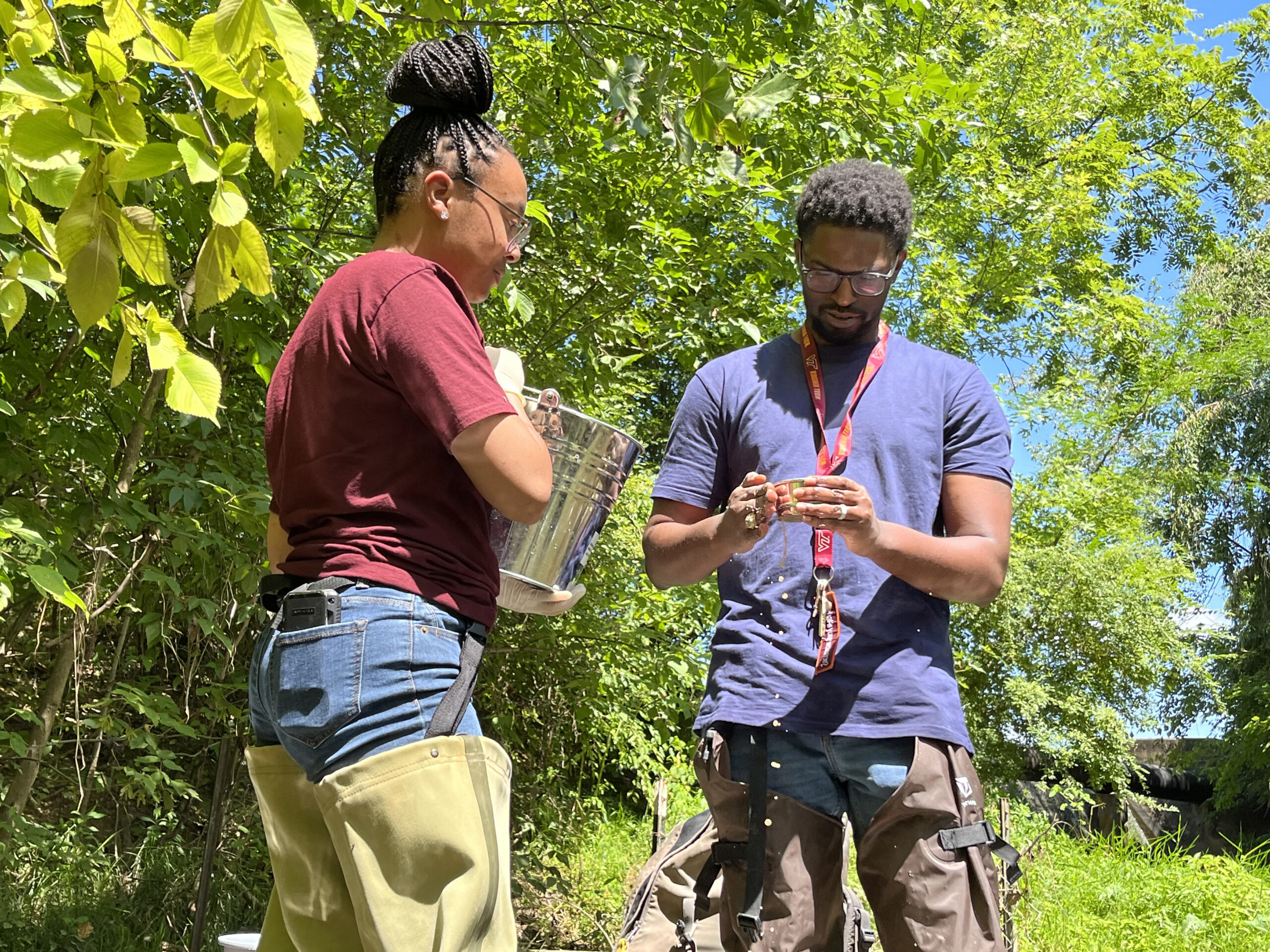
Health issues are becoming more frequent for the Waccamaw Siouan Tribe. The answers may lie at their feet.
As the waters of the Cape Fear River Basin weave through the North Carolina Piedmont down into the Coastal Plains, they pass power plants, hog and poultry farms, paper mills, landfills, textile mills, agricultural farms, and more. These facilities mark the Cape Fear River, which provides drinking water for 500,000 residents and is the most industrialized in the state.
Of the 2,000 members of the Waccamaw Siouan Tribe, approximately 1,200 live within 10 minutes of the Cape Fear. Like many people in our state, they not only depend on their surrounding waters but feel a connection to them — a connection that industrial pollution threatens.
According to the southeastern North Carolina Tribe, they are the “People of the Falling Star,” the result of a meteor that crashed to Earth thousands of years ago. With tribal grounds in Bladen and Columbus County and near the Green Swamp, the Tribe belongs to the waters of Lake Waccamaw and the surrounding wetlands.
The North Carolina Department of Health and Human Services (NCDHHS) reported that between 2017 and 2021, about 179 per 100,000 residents died from cancer in Columbus County. This shows an increase from their previous report for the county’s cancer mortality rate for 2016-2020, which showed that, on average, 177 residents died from cancer. Bladen County had a similar slight rise.
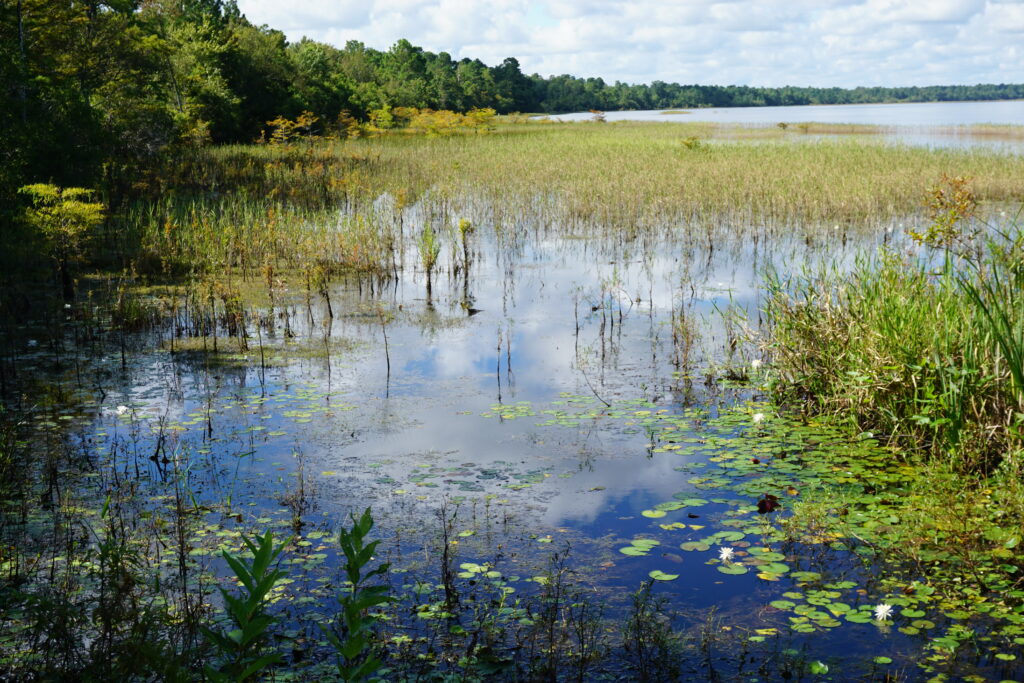
“You hear statements like, ‘Well, it’s not a matter of if, but when you’re going to get cancer,’ or ‘There’s something in the water,’” says Ashley Lomboy, founder of the Waccamaw Siouan STEM Studio and member of the Tribe. “I lived away for a while, and I remember my mom talking about how there was a person who came, and they were selling ‘the good water.’”
In 2017, the North Carolina Department of Environmental Quality (NCDEQ) and the NCDHHS connected Chemours, a PFAS manufacturing plant in Fayetteville, to contamination of the Cape Fear River with a type of PFAS called GenX. Manufacturers use PFAS (per- and polyfluoroalkyl substances) in products that can resist heat, grease, oil, and water.
PFAS are nearly indestructible, and exposure can elevate the risk of cancer. Notwithstanding the Chemours findings, it is typically challenging to attribute the presence of these “forever chemicals” to any single source. In fact, the Research Triangle Institute has linked firefighting foam, agricultural practices, wastewater facilities, and industrial PFAS manufacturing to contamination in the Cape Fear watershed.
After news of the Chemours PFAS contamination, the NCDEQ required the company to offer well water testing in potentially affected areas. This did not initially include Columbus County, and when testing expanded to include the county in 2022, Waccamaw Siouan tribal grounds were nine miles outside of the court-drawn testing territory.
In response, the Waccamaw STEM Studio undertook “Soul Science” to measure soil contaminants throughout the Waccamaw watershed. The Community Collaborative Research Grant (CCRG), Cape Fear River Association (CFRA), and the University of North Carolina Wilmington (UNCW) supported the project, which assessed soil contamination and has, in turn, provided the Tribe with data that supports expanded water testing.
“The rest of the world functions in data and needs evidence,” says Lomboy. “We see it in deaths and health effects that hurt our families.”
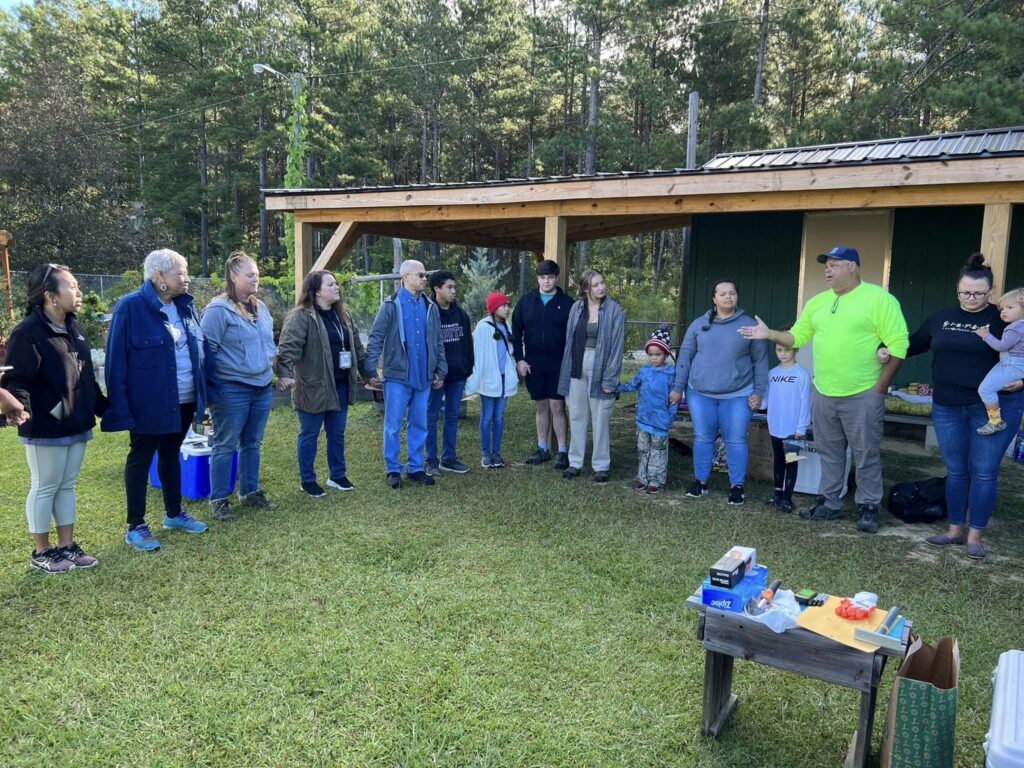
The Soul of Soul Science
Along with Lomboy, CFRA’s executive director Maya Miller and UNCW’s Eric Britt Moore co-created Soul Science. From the outset, the three agreed that the Tribe needed to lead the initiative.
“I’ve always been about doing science that helps marginalized populations understand their environment, particularly Black, Brown, and Native communities,” says Moore, a soil scientist specializing in environmental justice and sustainable agriculture. “So many academic and scientific communities have this idea that academics know best, so we should lead, and we should be the ones in charge rather than the ones listening and providing support.”
The research team implemented listening practices, attending tribal Talking Circles to discuss the project, address potential concerns, and keep the Tribe informed throughout the process. These sessions also provided an opportunity for community involvement, and Soul Science garnered the participation of over 25% of the Tribe.
“We listened to the elders, who drove the project and what we would do,” Lomboy says. “The youth came in and collected the soil and did the ceremony with every piece of dirt that came up. When we got the soil samples with the scientists, they were laying down tobacco and praying over that soil sample, which is part of our culture — to honor the land.”
After the Tribe collected the soil samples, Moore ran tests to measure levels of two classes of PFAS, Perfluorooctanoic Acid (PFOA) and Perfluorooctane Sulfonic Acid (PFOS), against recommended levels for water; enforceable standards for soil and water did not exist at the time. Testing determined that 8% of samples had PFOA levels between 360 and 520 parts per trillion (PPT), while 70% had PFOS levels between 260 and 7000 PPT.

The Environmental Protection Agency has since set limits for PFAS in water at 4 PPT — a restriction public water systems will have to meet over the next several years — but it has not yet established limits for soil contamination by PFAS.
“We’re obviously looking for that big solution. We’re looking for the smoking gun, and I think we saw some of that,” says Lomboy. “That’s mostly due to the EPA regulations for soil not being in place. It just says it’s ‘high.’ Is it too much? Probably.”
Moore cautioned against attributing the results to one factor or drawing conclusions from a single study. Taking this “very, very limited amount of data,” he says, and linking it directly to the cases of cancer within the Waccamaw Siouan Tribe “wouldn’t be responsible.”
“I can understand, at a deep visceral level, the need — the psychological, moral, spiritual need — to identify the source of a problem causing so much devastation,” Moore laments. “But that’s not how science works all the time.”
Lomboy served as a bridge between the scientists and the tribal community. She says the news of soil contamination has been devastating for the Tribe.

“It’s like telling a person not to breathe by telling them not to put their hands in the dirt,” she says. “And I think that was a major part of what scared people. Folks were like, ‘We’ve been this way all our life — what are we going to do with the dirt?’”
PFAS accumulate and spread, meaning that the levels Soul Science found may be a combination of local factors and upstream industry.
“Industrial contamination in rural areas can have far-reaching effects beyond the immediate vicinity,” says Sarah Mehdaova, North Carolina Sea Grant’s coastal public health specialist. “While the contamination may originate in rural areas due to industrial activities, such as agricultural runoff or chemical spills, pollutants can spread through various pathways, including air, water, and soil, affecting neighboring communities and ecosystems.”
The Hidden Costs of Industrialization
Riegelwood, North Carolina, a small town just east of the Waccamaw Siouan Tribal grounds, is the site of an International Paper (IP) pulp mill, the county’s largest employer. When IP lowered production at this location last year, it cut 200 of 650 positions — a decision the Tribe still feels.
“They hire a lot of native people to work there, and they put a lot of food on the table,” says Lomboy. “This was a big thing that came up at the very beginning of the listening session. People sat up and asked, ‘How’s this testing going to impact my dad’s job at IP?’”
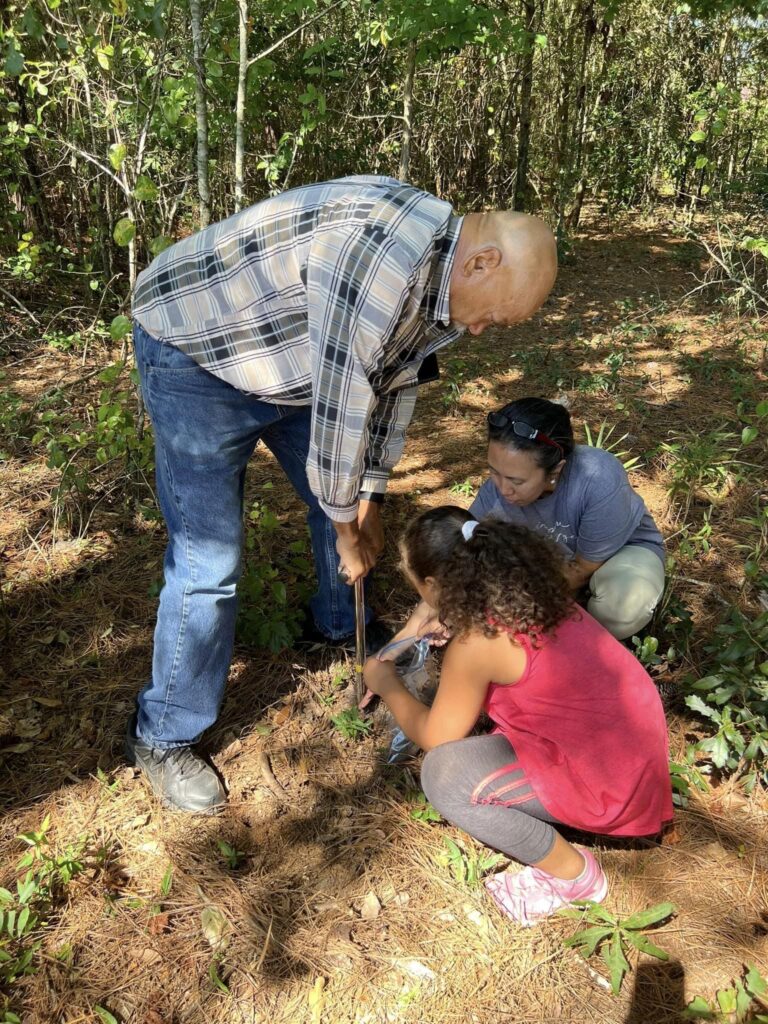
Facilities like IP often become lynchpins in rural economies, sometimes at the cost of environmental and community health. Epidemiologists at the University of North Carolina at Chapel Hill found that industrialization worsens urban-rural exploitation by concentrating pollution in vulnerable rural communities and hiding harmful effects from people in urban areas who benefit from these practices.
Paper mills like IP may also be a significant source of PFAS contamination, and in an assessment of 269 pulp and paper mills that discharged directly into a river, the Environmental Defense Fund listed the Cape Fear as the most impacted.
“These companies that are polluting the environment roll into rural communities, set up shop, and hire everyone,” Lomboy says. “People love them because they’re giving them jobs and putting food on the table. People know what they’re doing, and it’s like, ‘Kill me now or kill me later.’ And that’s where we’re at. We’re at the ‘kill me later’ stage because these companies have been around for decades.”
According to the USDA, rural areas have lower wages, property taxes, and land prices, so manufacturing companies seek out these regions for their facilities. These industries often offer hundreds of jobs with decent pay to rural communities, which generally face limited employment options.
“Marginalized people are often both the victims and the agents of environmental destruction, usually because of economic necessity,” Moore says. “People will say, ‘Well, the smokestacks are causing the problem, so we’ll get rid of them.’ But if you haven’t changed the systemic factors that brought the smokestacks, then you’re just going to end up replacing one form of contamination with another. The issue never gets solved because we do not ask the right questions. We do not listen. We do not value the voices of marginalized communities.”
Moore says that projects like Soul Science can serve as a model for this type of listening.
“These issues have a long history,” he says. “And I think that really speaks to why environmental justice should be much more a part of our conversations.”
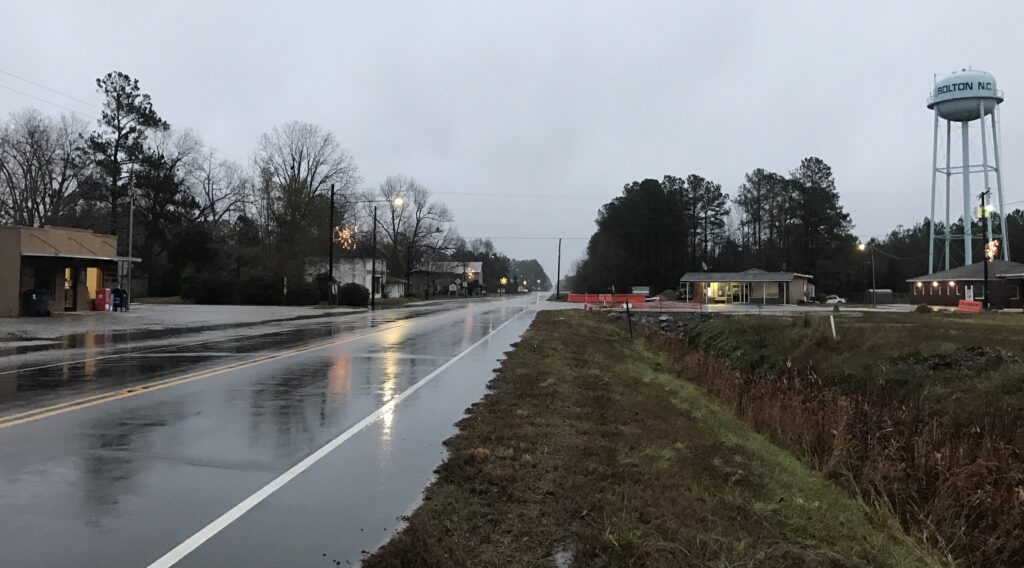
Trenches to Nowhere
Superfund — the EPA’s program for cleaning up areas of extreme contamination — has two sites located at corporations in Riegelwood: Wright Chemical Corporation and Holtrachem. Today, Honeywell owns the latter and shares facilities with IP along the Cape Fear River.
According to the Waccamaw Siouan Tribe, these facilities are located on what used to be Tribal land. Lomboy interviewed her late great-aunt, Mertie Patrick Freeman, as part of the Waccamaw STEM Studio’s “Star Preservation Project,” which sought to document the elders’ oral history, including the Tribe’s loss of land.
“There was no way the Tribe could make money to keep the taxes paid upon it,” Freeman recounts in one interview. “And when International came here trying to get their hands on everything…they grabbed it.”
IP’s site used to belong to Riegel Paper, which Federal Paper purchased in 1972 before selling to IP in 1995. In the 1950s, Riegel Paper began a trenching project near Lake Waccamaw and started draining the wetland to make it more suitable for pine plantations. According to an East Carolina University geology report from 2000, the trenching project did drain much of the wetland area, but upland ditching projects designed to expand agricultural croplands led to increased erosion and runoff of fertilizers, insecticides, and pesticides.
Additionally, the Tribe reports that the trenches near them worsen flooding. “These channels drain the swamps,” says Lomboy. “And they go nowhere. They’re literally big, huge ditches. They didn’t connect them to anywhere the water can go.”

Severe flooding has afflicted these areas, counteracting the trenching project’s original intent and diminishing the amount of livable land. Lomboy says IP’s deforestation has also impacted tribal grounds.
“We’re getting flooded,” she says. “And all around, they’re cutting these trees out, which is not helping us because the roots are no longer there soaking up water, and now we’re flooding even more.”
Listening to the Past to Preserve the Future
Waccamaw Siouan STEM Studio is working with the Duke Superfund Community Engagement Core to deliver buckets, gloves, and other supplies to the tribal community to help limit exposure to PFAS.
Mitigating exposure is vital. Mehdaova notes that even low levels of contact can pose significant health risks.
Regular testing and guidance from local public health agencies can help communities monitor contaminants. “Community members can also install and maintain effective water filtration systems capable of removing PFAS contaminants,” she says. “Certain filtration methods, such as activated carbon or reverse osmosis, can effectively reduce PFAS levels in drinking water.”
Moore believes the story of the Waccamaw Siouan Tribe’s soil points to a need for systemic change.
“I think there must be a change in the mindset and the culture of science,” says Moore. “So often, environmental justice is something that’s tacked on at the end when it needs to be part of the foundational work that’s done. That’s part of what made our project effective. We started with environmental justice. We started with valuing voices.”
One of Lomboy’s many projects with the STEM Studio is to preserve documents about the Tribe.
“It’s a labor of love,” she says. “But I have a deeper appreciation and understanding about what our people went through, how it’s a miracle that we’re still here today, and how we take pride in who we are. We are the People of the Fallen Star, and it’s about preserving who we are.”
The Community Collaborative Research Grant program pairs community knowledge with scientific expertise to address urgent coastal issues. North Carolina Sea Grant, the NC Water Resources Institute, and the Kenan Institute for Engineering, Technology, and Science support the program.
More
Information about the Community Collaborative Research Grant.
Learn more about the Waccamaw Siouan Tribe.
Visit the Waccamaw Siouan STEM Studio website and read about the Soul Science Project.
Read more from Coastwatch about PFAS in articles such as “Mystery in the Cape Fear” and “PFAS in the Tidal Creeks of Southeastern North Carolina.“
Marlo Chapman is a science communicator with North Carolina Sea Grant and a contributing editor for Coastwatch. In addition to Coastwatch, her writing has appeared in American Scientist. She recently graduated with an M.A. in English from NC State University, where she specialized in rhetoric and composition.

